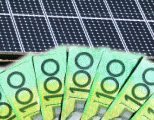National solar provider Energy Matters says autumn is a great time for solar – with cool days and clear skies, solar power systems will be operating at optimum efficiency.
One of the many myths about home solar power is that the hotter the day, the more electricity is produced. In fact, it’s the opposite.
Heat is the enemy of a solar panel – it reduces efficiency and the lower the quality of a panel, the less power it will generate on a hot day. The heat issue is an example of why not all solar panels are equal. However, the length of sunlight exposure over the longer summer days goes some way to addressing this issue.
Autumn is probably the best time of year in terms of power generated per sun-hour – the cooler conditions allow panels to achieve their best efficiency.
The 5kW system can return a financial benefit of an estimated $1,042 – $2,450 annually depending on installation location and electricity consumption profile; meaning payback time can be just a few years.
John Ferguson and Rosanne Barrett, The Australian, September 04, 2012 12:00AM
THE national trend of plunging solar feed-in tariffs intensified yesterday when Victoria slashed its subsidies to rein in spending and to account for soaring demand for renewable energy.
Victorian Energy and Resources Minister, Michael O’Brien, released figures showing the original Labor-era tariffs for providing surplus power to the grid would cost Victorian taxpayers nearly $500 million by 2024.
He said a core argument against big tariffs was that all energy users were effectively propping up those consumers who had signed up to healthy deals.
The rising price of electricity, he said, was encouraging a rush of consumers to sign up to solar power and not even big falls in feed-in tariffs was curbing demand.
“Victoria saw a 33 per cent increase in solar connections for the first six months of 2012 compared to the same period in 2011, despite the feed-in tariff stepping down from 60c/kWh to 25c/KWh,” he said. “This demonstrates that it is the falling cost of solar and the rising price of electricity that is driving uptake, rather than feed-in tariffs.
“We have avoided the boom-bust experience in other states that eliminated all feed-in tariffs without warning.”
An analysis by The Australian shows a clear national trend towards either eliminating or markedly cutting the size of payments for people whose solar energy production exceeds their domestic needs and is then fed back into the power grid.
Mr O’Brien said the government would accept a Victorian Competition and Efficiency Commission finding that the feed-in tariff should be extended to all sources of low emission energy generation.
Clean Energy Council Policy Director, Russell Marsh, said the national solar industry was preparing for a backlash due to the policy change.
“This change could have a serious negative impact on an industry that has been delivering major economic benefits to the state,” Mr Marsh said.
ADDITIONAL REPORTING: IMRE SALUSINSZKY, MATTHEW DENHOLM (http://www.theaustralian.com.au/national-affairs/victoria-cuts-solar-power-subsidies/story-fn59niix-1226464282004, 2012)
(sourced from www.energymatters.com.au, 4th April 2013) Autumn – A Great Time For Solar Electricity Generation

